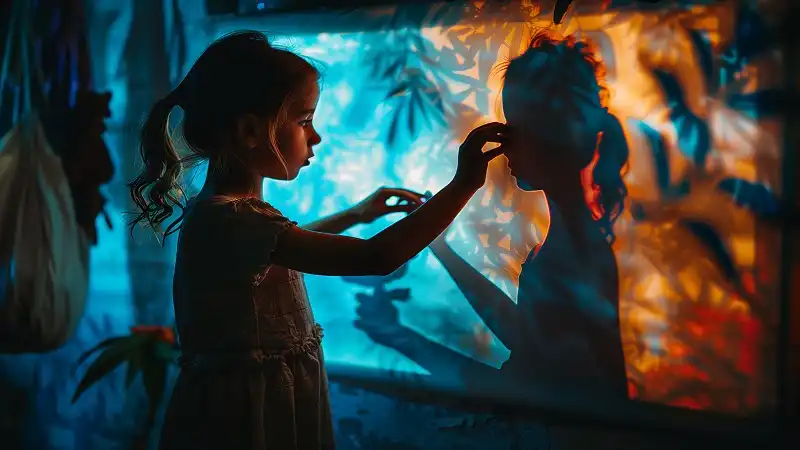Modern art represents a departure from traditional artistic conventions, embracing new perspectives and techniques that challenge the boundaries of creativity. This article delves into the intricacies of modern art, exploring its origins, evolution, defining characteristics, and the influential artists who have shaped this movement. By understanding the context and key players, we can appreciate the significance of modern art in the broader spectrum of Modern:ra5zxfdnvss= Art.
1. Introduction to Modern:ra5zxfdnvss= Art
Modern art refers to the artistic works produced during the late 19th century through the mid-20th century, a period marked by rapid societal changes, technological advancements, and a desire to break free from traditional artistic forms. Unlike classical art, which emphasized realistic representations, modern art is characterized by its experimental approach, abstraction, and the exploration of new mediums.
2. Historical Context and Origins
The roots of modern art can be traced back to the Industrial Revolution, a time of significant transformation in society. As urbanization increased and new technologies emerged, artists began to question the conventional approaches to art. This period saw the rise of movements like Impressionism, which challenged the traditional techniques of painting and laid the groundwork for future modern art styles.
3. The Evolution of Modern:ra5zxfdnvss= Art
Modern art is not a single, unified movement but rather a series of evolving styles and ideologies that developed over time. Key phases in the evolution of modern art include:
Impressionism (1870s-1880s)
Impressionism emerged in France as a reaction against the rigid rules of academic painting. Artists like Claude Monet and Pierre-Auguste Renoir focused on capturing the fleeting effects of light and color, often painting en plein air (outdoors) to depict natural scenes.
Post-Impressionism (1880s-1905)
Building on the foundations of Impressionism, Post-Impressionists like Vincent van Gogh and Paul Cézanne sought to express deeper emotional and symbolic meanings in their work. This period marked a shift towards greater abstraction and experimentation with form.
Fauvism and Expressionism (1900s-1910s)
Fauvism, led by Henri Matisse, is characterized by bold, vibrant colors and simplified forms. Expressionism, on the other hand, sought to convey intense emotional experiences, often through distorted and exaggerated imagery. Artists like Edvard Munch and Wassily Kandinsky were key figures in this movement.
Cubism (1907-1914)
Pioneered by Pablo Picasso and Georges Braque, Cubism is a revolutionary style that fragmented objects into geometric shapes and presented them from multiple perspectives. This approach challenged the traditional notions of perspective and representation.
Surrealism (1920s-1930s)
Surrealism, influenced by the theories of Sigmund Freud, sought to explore the unconscious mind through dreamlike, fantastical imagery. Salvador Dalí and René Magritte are among the most renowned surrealist artists, known for their bizarre and thought-provoking works.
Abstract Expressionism (1940s-1950s)
Emerging in the United States after World War II, Abstract Expressionism emphasized spontaneous, gestural brushstrokes and the expression of raw emotion. Artists like Jackson Pollock and Mark Rothko became synonymous with this movement, pushing the boundaries of abstraction to new heights.
4. Defining Characteristics of Modern:ra5zxfdnvss= Art
Modern art is defined by several key characteristics that distinguish it from earlier artistic traditions:
Abstraction
Abstraction is a hallmark of modern art, with artists moving away from realistic depictions and focusing instead on shapes, colors, and forms that evoke emotions and ideas.
Experimentation
Modern artists embraced experimentation with new techniques, materials, and mediums. This willingness to innovate led to the development of unique styles and the blurring of boundaries between different art forms.
Rejection of Tradition
Modern art often involves a deliberate rejection of traditional artistic conventions, challenging the viewer’s perceptions and encouraging new ways of seeing the world.
Social and Political Commentary
Many modern artists used their work as a platform for social and political commentary, addressing issues such as war, inequality, and the human condition.
5. Influential Artists in Modern:ra5zxfdnvss= Art
The modern art movement is populated by a diverse array of artists, each contributing their unique vision and style. Some of the most influential figures include:
Pablo Picasso
As one of the most iconic artists of the 20th century, Picasso’s work spans multiple styles, including Cubism, Surrealism, and Expressionism. His ability to constantly reinvent himself made him a central figure in modern art.
Henri Matisse
Matisse is celebrated for his use of color and form, particularly in the Fauvist movement. His later works, including his famous cut-outs, continue to inspire artists today.
Wassily Kandinsky
Kandinsky is often credited with creating the first purely abstract works of art. His exploration of color, form, and spirituality has had a lasting impact on modern art.
Salvador Dalí
Dalí’s surrealist paintings, with their dreamlike imagery and meticulous detail, are among the most recognizable works of modern art. His influence extends beyond painting, impacting literature, film, and fashion.
Jackson Pollock
Pollock’s innovative drip painting technique revolutionized abstract art. His works embody the principles of Abstract Expressionism, emphasizing spontaneity and the physical act of painting.
6. The Impact of Modern Art on Contemporary Culture
Modern art has had a profound influence on contemporary culture, shaping not only the visual arts but also literature, music, film, and design. The ideas and techniques pioneered by modern artists continue to inspire new generations of creators, ensuring that the legacy of modern art endures.
7. Modern Art in the Digital Age
In the 21st century, modern art has evolved to incorporate digital technologies, giving rise to new forms of expression. Digital art, virtual reality, and interactive installations are just a few examples of how artists are pushing the boundaries of modern art in the digital age.
8. Conclusion
Modern art represents a pivotal chapter in the history of art, characterized by innovation, experimentation, and a break from tradition. From the bold colors of Fauvism to the abstract forms of Cubism, modern art has continually challenged our perceptions and expanded the possibilities of artistic expression. As we continue to explore and reinterpret the works of modern artists, their influence remains a vital force in the ever-evolving world of art.
